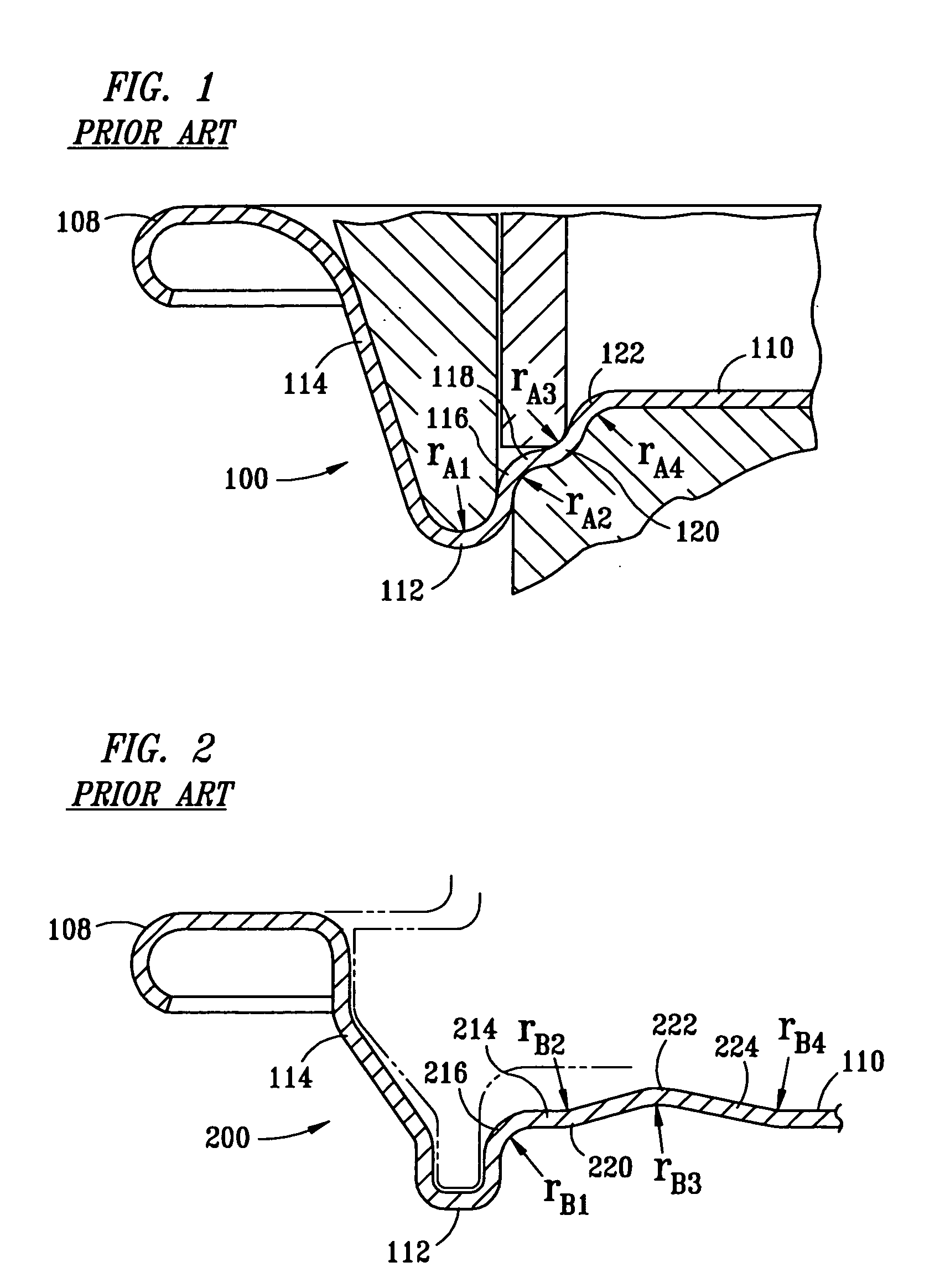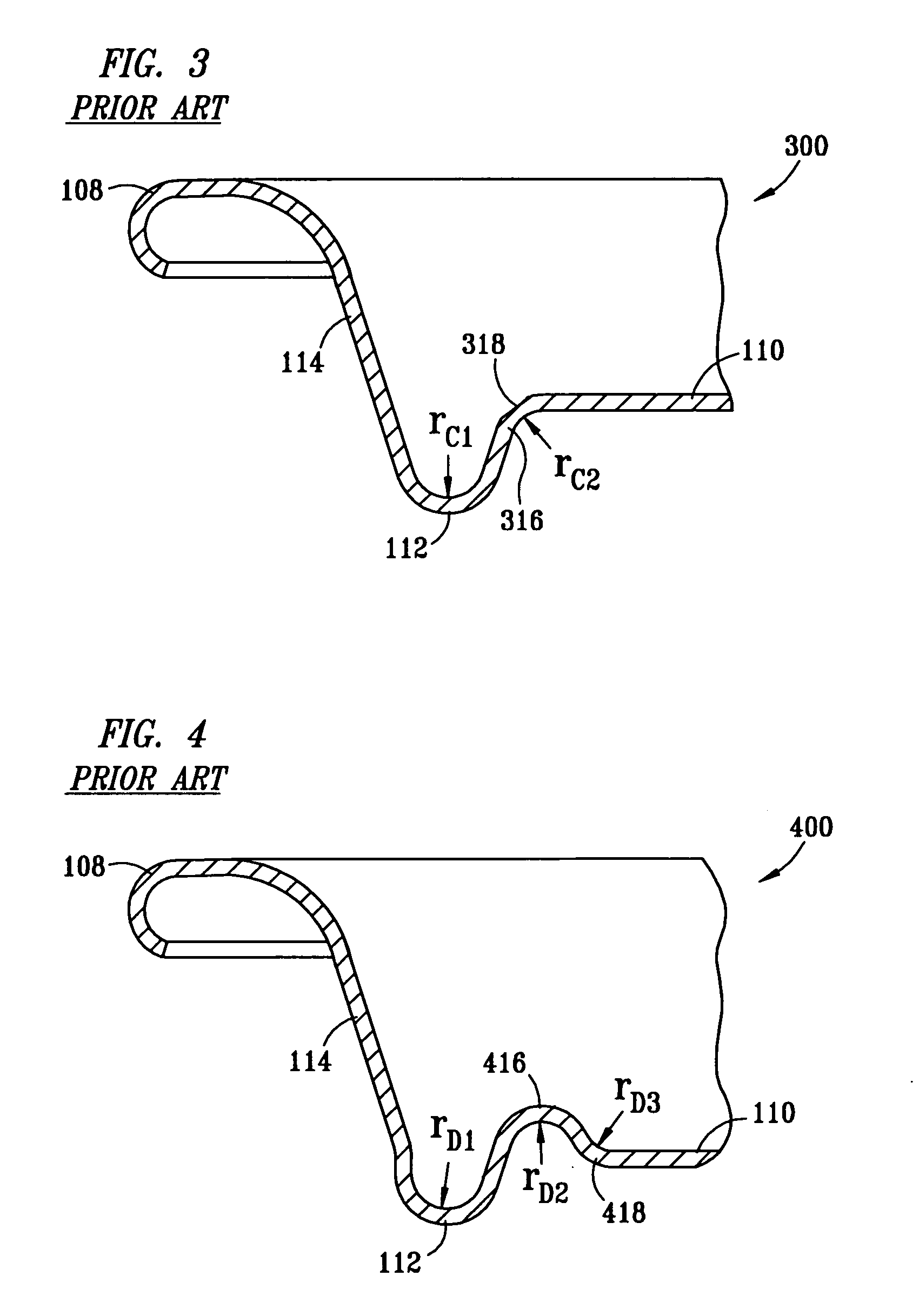Can lid closure and method of joining a can lid closure to a can body
a technology of can lid closure and can body, which is applied in the field of containers, can solve the problems of inability to withstand internal pressure, difficulty in manufacturing, and failure to lower pressure,
- Summary
- Abstract
- Description
- Claims
- Application Information
AI Technical Summary
Benefits of technology
Problems solved by technology
Method used
Image
Examples
Embodiment Construction
[0044] The present invention is described in the following text by reference to drawings of examples of how the invention can be made and used. The drawings are for illustrative purposes only and are not necessarily exact scale representations of the embodiments of the present invention. In these drawings, the same reference characters are used throughout the views to indicate like or corresponding parts. The embodiments shown and described herein are exemplary. Many details are well known in the art, and as such are neither shown nor described. It is not claimed that all of the details, parts, elements, or steps described and shown were invented herein. Even though numerous characteristics and advantages of the present invention have been described in the drawings and accompanying text, the description is illustrative only, and changes may be made, especially in matters of arrangement, shape and size of the parts, within the principles of the invention to the full extent indicated ...
PUM
 Login to View More
Login to View More Abstract
Description
Claims
Application Information
 Login to View More
Login to View More - R&D
- Intellectual Property
- Life Sciences
- Materials
- Tech Scout
- Unparalleled Data Quality
- Higher Quality Content
- 60% Fewer Hallucinations
Browse by: Latest US Patents, China's latest patents, Technical Efficacy Thesaurus, Application Domain, Technology Topic, Popular Technical Reports.
© 2025 PatSnap. All rights reserved.Legal|Privacy policy|Modern Slavery Act Transparency Statement|Sitemap|About US| Contact US: help@patsnap.com



